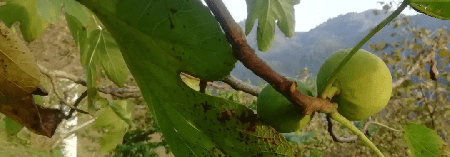Fig trees (Ficus carica) are typically associated with warm and Mediterranean climates, and they thrive in regions with hot, dry summers and mild winters. Sweden, with its colder climate, especially in the northern parts, may not be the most conducive environment for growing figs outdoors. Figs are sensitive to frost, and prolonged exposure to freezing temperatures can damage or kill the trees.
However, in some regions of southern Sweden, particularly along the coast and in more sheltered areas with milder microclimates, it might be possible to grow figs with some protection, such as planting them against a south-facing wall to capture and retain heat. Additionally, potted fig trees can be grown in containers and moved indoors during the winter to protect them from the cold.

If you’re interested in growing figs in Sweden, it’s essential to choose cold-hardy varieties, provide proper winter protection, and consider the local climate conditions. It might also be helpful to consult with local horticulturists or gardening experts who are familiar with the specific conditions in your area.
Can figs grow in Sweden?
Similarly to Sweden, Sweden has a colder climate, and figs may face challenges in outdoor cultivation. Fig trees are more commonly associated with warmer and Mediterranean climates. However, as with Sweden, it is not impossible to grow figs in Sweden, especially in the southern parts of the country where the climate is milder.
To increase the chances of successful fig cultivation in Sweden, you can consider the following:
- Choose Cold-Hardy Varieties: Some fig varieties are more cold-tolerant than others. Look for cultivars that are known for their ability to withstand colder temperatures.
- Microclimates: Seek out microclimates in your garden or yard that may provide additional warmth and protection. Planting figs against a south-facing wall can help capture and retain heat.
- Winter Protection: In colder climates, it might be necessary to provide winter protection for fig trees. This can include wrapping the tree in burlap or other insulating materials, mulching around the base, or even moving potted figs indoors during the winter months.
- Potted Cultivation: Growing figs in containers allows for more flexibility. You can move potted fig trees indoors during the winter to protect them from freezing temperatures.
- Consult Local Experts: Talk to local horticulturists, gardening experts, or other individuals who have experience with fig cultivation in your specific region of Sweden. They can provide valuable insights into the local climate and offer advice on successful fig growing practices.
Keep in mind that successful cultivation of figs in colder climates may require some experimentation and careful attention to the specific conditions in your area. Additionally, climate conditions can vary within Sweden, so what works in one part of the country may not be suitable for another.
How to care for figs in Sweden?
Caring for figs in Sweden, where the climate can be challenging for these trees, requires attention to specific details to ensure their well-being. Here are some tips for caring for fig trees in colder climates like Sweden:
- Choose Cold-Hardy Varieties:
- Select fig varieties that are known for their cold resistance. Some varieties are more tolerant of lower temperatures than others.
- Plant in a Sheltered Location:
- Choose a location that provides some protection from the cold winds, such as a south-facing wall or a sheltered spot. This can help create a microclimate that is more conducive to fig growth.
- Use Mulch:
- Apply a thick layer of mulch around the base of the tree to help insulate the soil. This can protect the roots from extreme temperature fluctuations.
- Wrap the Tree for Winter:
- In late fall, before the first frost, wrap the tree in burlap or other insulating material. This can provide additional protection against the cold.
- Potted Fig Trees:
- Consider growing figs in containers, especially if you have limited space or if you want the flexibility to move the trees indoors during the winter. Potted figs can be brought indoors or placed in a protected area during the coldest months.
- Pruning:
- Prune the fig tree to remove dead or damaged branches, and shape it to improve air circulation. Proper pruning can help prevent disease and encourage healthy growth.
- Fertilize:
- Fertilize the fig tree in the spring with a balanced fertilizer. Avoid excessive nitrogen, as it can encourage new growth that may be more susceptible to frost damage.
- Watering:
- Provide consistent watering, especially during dry periods. While fig trees are somewhat drought-tolerant, consistent moisture is essential for fruit development.
- Monitor for Pests and Diseases:
- Keep an eye out for pests and diseases that may affect fig trees. Aphids, scale insects, and fungal diseases can be common issues.
- Harvesting:
- Harvest figs when they are fully ripe. In Sweden, the growing season may be shorter, so pay attention to the ripening process and pick the fruit promptly.
Remember that successful fig cultivation in colder climates like Sweden may require some experimentation, and it’s essential to adapt your care practices based on the specific conditions in your location. Consulting with local gardening experts or horticulturists can provide valuable insights tailored to your region.
